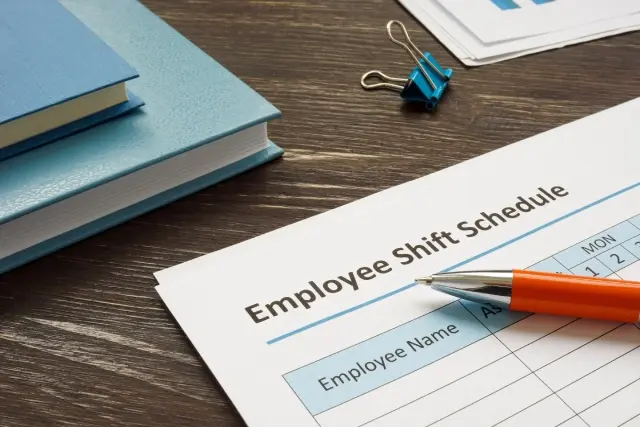In today's workforce, hourly employees are just as eager for flexibility as any other worker. However, managers often find it challenging to incorporate flexibility into rigid hourly schedules. To assist employers in achieving the right balance and successful implementation, here are some valuable tips on workplace flexibility.
DO: Invest in shift scheduling tools
To effectively manage flexible schedules, employers need the assistance of advanced shift scheduling software. The old-fashioned manual approach is not only time-consuming but also prone to errors, causing frustration for both employees and managers. By embracing modern tools, employers can streamline the scheduling process, saving precious time and alleviating administrative burdens.
Mobile-optimized scheduling tools enable employees to request time off or swap shifts conveniently from their smartphones, improving accessibility and responsiveness. Not only does this enhance employee satisfaction, but it also reduces last-minute requests and helps maintain a stable and efficient workflow.
DON'T: Treat schedules like one-size-fits-all
While it may seem convenient to standardize shifts into clean 8-hour blocks, the eight hour work day doesn't work for everyone. If your employees are in school or have children, they may prefer having short shifts more often. To address these individual needs, consider offering flexible shift options, like shorter work days or split shifts, which can enable employees to better balance their personal and professional lives.
A more personalized approach to scheduling shows employees that their well-being and work-life balance are valued, leading to increased loyalty and productivity.
DO: Create a detailed shift swapping policy
To tackle the occasional scheduling conflicts that come with flexibility, it's important to create a clear and comprehensive shift swapping policy. By engaging the team in the policy's development, employers can ensure that it meets the needs of employees while also aligning with business requirements.
An accessible and easy-to-understand policy will empower employees to manage their own shift swaps responsibly, reducing managerial involvement and improving efficiency. Encouraging proactive communication between employees when arranging swaps fosters a collaborative work environment and builds stronger team dynamics.
DON'T: Forget to call out flexibility in your hiring efforts
Workplace flexibility is a game-changer when it comes to attracting the best hires and building a reputable employer brand. By highlighting your flexible work arrangements in your job descriptions, potential applicants are given a clear signal that work-life balance and employee well-being are highly valued by the employer.
DO: Provide training and support for managers
Flexibility is a hard nut to crack for managers of the hourly workforce. So help yours figure it out. By providing your managers with proper training on how to build flexible schedules, set clear expectations, and maintain open communication, you'll make it easier for them to better support their teams.
They will be equipped with the skills and knowledge they need to navigate the challenges that come with managing flexible schedules in an hourly workforce. By supporting your managers in this way, you will build a culture that values and embraces flexibility, leading to higher employee satisfaction, productivity, and retention rates.
DON'T: Overlook fairness and equity
When it comes to embracing flexibility, it's important to maintain a fair and equal work environment. Avoid granting flexibility based on personal preferences or favoritism, as this can lead to disengagement and conflicts among employees. Instead, establish clear guidelines and criteria for offering flexible arrangements, ensuring that decisions are aligned with business needs and take into account individual circumstances.
Transparent communication about the reasons behind granting or denying specific requests can foster understanding and prevent potential morale issues. Based on a survey by HBR, perceptions of a more fair employee experience improves employee performance by up to 26% and employee retention by up to 27%. A commitment to fairness and equity reinforces employees' trust in the organization and strengthens their commitment to its goals.
DO: Monitor and evaluate policies
Regularly assess the impact of flexible arrangements on productivity, employee satisfaction, and overall business outcomes. Collect feedback from employees through surveys or focus groups to gain insights into their experiences with workplace flexibility.
Use this information to make data-driven decisions, identify areas for improvement, and refine policies to better meet employee needs. A culture of continuous improvement fosters an adaptable and supportive work environment, ultimately leading to a more engaged and motivated workforce.
Workplace flexibility is a powerful tool
By investing in scheduling technology, emphasizing flexibility in recruitment efforts, and continuously evaluating policies, companies can successfully integrate flexibility into their work culture. When approached strategically and with sensitivity to employee needs, workplace flexibility can be a driving force behind a happier, more engaged, and highly productive workforce.





